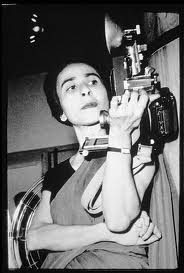Homai Vyarwala, considered to be the nation’s first female photojournalist, shot to fame in the 1940s with her iconic pre-independence photographs.
Born in 1913 in Navsari, Gujarat to a Parsi family, and after completing her education at Bombay University and J.J College of Art, she moved to Delhi in 1942, with her husband, when the National Movement was gathering fervour.
India’s first Prime Minister, Jawaharlal Nehru was one of her favourite subjects, and she has photographs of many important pre-Independence events to her credit.
Hers was a great story, of India’s first female press photographer, capturing the last days of the Raj, and the birth of a new nation.
Among many iconic photographers, her best known works include photographs of the meeting where the leader voted upon the 3rd June plan for the partition of India, the last Viceroy, Lord Mountbatten departing the country, the first tri-colour hosting at the Red Fort on 15th August 1947, the funerals of Mahatma Gandhi, Jawaharlal Nehru and Lal Bahadur Shastri.
She had also covered Queen Elizabeth’s and U.S President Dwight Eisenhower’s visit to India.
Apart from photographing landmark events in the nation’s history, Homai had a penchant for capturing sights of everyday life in Bombay and Delhi.
Homai had been married at a young age to Manekshaw Vyarwala, a photographer with the Times Of India. They got their big break when the World War II broke out the British were in a dire need of photo-journalists. They moved to Delhi, and Manekshaw was lent to British Information Services for a year, while Homai was hired full time.
Her contribution to Indian photojournalism is irreplaceable as she captured the trials and turbulences of an infant nation, brimming with hope, and grappling with challenges.
Inspired by the Mahatma’s teachings, she maintained a simple lifestyle and would travel all around Delhi on a bicycle in a sari, clinging to her heavy equipment. Many of her photographs were published under the pseudonym “Dalda 13”.
Her career in photojournalism, which began in the 1930s, came to end in the 1970, soon after her husband’s death. She felt disgusted by her collogues and didn’t want to be a part of the profession anymore. She said in an interview “It was not worth it any more. We had rules for photographers; we even followed a dress code. We treated each other with respect, like colleagues. But then, things changed for the worst. They [the new generation of photographers] were only interested in making a few quick bucks; I didn’t want to be part of the crowd anymore.”
She did not take a single photograph after that.
In 2011, she was awarded Padma Vibhushan by the Indian government.
A year later, Homai, 98 died in her home in Vadodra. Her only child Farooq, had died in 1989.





34 Comments. Leave new
She left behind an inspiring legacy. Thank you for making us all aware about this great photographer.
Thank you so much. And I agree. She’s inspirational.
wow..that’s great!
🙂
nice work…inspirational!
Thanks.
great article.
Thanks.
good article
Thanks.
Thank you for writing about such important women, it acts as an encouragement for everyone. Well researched and written article 🙂
Thanks a lot. You’re right. She was really a role model for so many women 🙂
Interesting.
Thanks.
Great efforts put to highlight such an inspiring personality..!! Well done
Thanks a lot.
Inspirational article. Legendary woman! #respect
Thanks.
Informative one. Got to know something new.
Thank you.
good one 🙂
Thanks 🙂
Inspiring indeed? thank you for letting us know about her 🙂
Thank you so much 🙂 My pleasure.
She has managed to make a change through her work, truly inspiring
I agree 🙂
a very good article! got to know something new! keep it up
Thank you.
An inspiring lady.. it was something n’re for.me to.know 🙂 nice work!
Thanks 🙂
I’m sure this s new and interesting information for most of us, thank you!
Thanks you 🙂
That’s interesting!
Thank you.